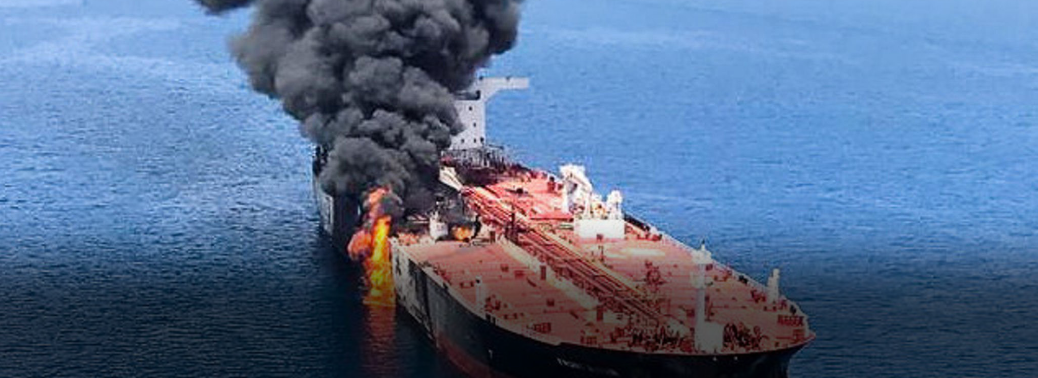TWO OIL TANKERS ATTACKED IN GULF OF OMAN, US BLAMES IRAN
14, Jun 2019

Prelims level : International schemes
Mains level : GS3- Challenges to internal security through communication networks, role of media and social networking sites in internal security challenges, basics of cyber security; money-laundering and its prevention
Why in news:
- Two oil tankers have been attacked in the Gulf of Oman, raising regional tensions after a similar incident involving four tankers.
Details:
- The Strait of Hormuz, a vital shipping route linking Middle East oil producers to markets in Asia, Europe, North America and beyond, has been at the heart of regional tensions for decades.
- Strait of Hormuz
- The Strait of Hormuz is a strait between the Persian Gulf and the Gulf of Oman.
- It provides the only sea passage from the Persian Gulf to the open ocean and is one of the world’s most strategically important choke points.
- The waterway separates Iran and Oman, linking the Gulf to the Gulf of Oman and the Arabian Sea.
- The Strait is 21 miles (33 km) wide at its narrowest point, but the shipping lane is just two miles (three km) wide in either direction.
Why does it matter?
- The US Energy Information Administration estimated that 18.5 million barrels per day (bpd) of seaborne oil passed through the waterway in 2016.
- That was about 30 per cent of crude and other oil liquids traded by sea in 2016.
- With global oil consumption standing at about 100 million bpd, that means almost a fifth passes through the Strait.
- Most crude exported from Saudi Arabia, Iran, the UAE, Kuwait and Iraq — all members of the Organization of the Petroleum Exporting Countries are shipped through the waterway.
- It is also the route used for nearly all the liquefied natural gas (LNG) produced by the world’s biggest LNG exporter, Qatar.
- During the 1980-1988 Iran-Iraq war, the two sides sought to disrupt each other’s oil exports in what was known as the Tanker War.
- The US Fifth Fleet, based in Bahrain, is tasked with protecting the commercial ships in the area.
- The fleet ensures that the critical waterway remains open, provocative Iranian military maneuvers are likely in the immediate offing as is a nuclear restart.
- Iran agreed to rein in its nuclear programme in return for an easing of sanctions under a 2015 deal with the United States and five other global powers.
- Washington pulled out of the pact in 2018. Western powers fear Iran wants to make nuclear weapons. Tehran denies this.
- The UAE and Saudi Arabia have sought to find other routes to bypass the Strait, including building more oil pipelines.
Incidents in the strait before:
- In January 2012, Iran threatened to block the Strait in retaliation for US and European sanctions that targeted its oil revenues in an attempt to stop Tehran’s nuclear programme.
- In May 2015, Iranian ships fired shots at a Singapore-flagged tanker which it said damaged an Iranian oil platform, causing the vessel to flee. It also seized a container ship in the Strait. In July 2018, Iranian President hinted Iran could disrupt oil flows through the Strait in response to US calls to reduce Iran’s oil exports to zero.
- A Revolutionary Guards commander also said Iran would block all exports through the Strait if Iranian exports were stopped. The US in turn declared the guards a terrorist organization.






